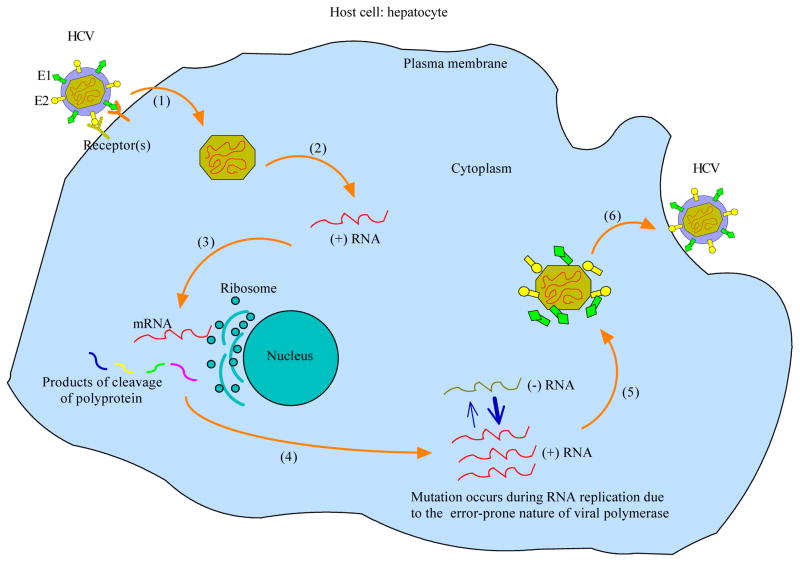Figure 1. HCV life cycle.
(1) Following viral binding, receptor-mediated endocytosis and membrane fusion, nucleocapsid enters into the cytoplasm of the host cell; (2) Uncoating of nucleocapsid exposes a positive-strand RNA genome; (3) Internal ribosomal entry site (IRES)-mediated translation of the viral genome generates a large polyprotein, which is then proteolytically cleaved by enzymes such as the NS3-4A serine protease to produce 10 viral proteins; (4) Viral polymerase, a product of cleavage, participates in the synthesis of both positive- and negative-strand RNA genomes; (5) Packaging and assembly of progeny virions; (6) Vesicle fusion at the plasma membrane and viral release.

